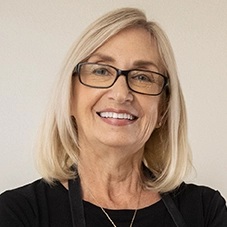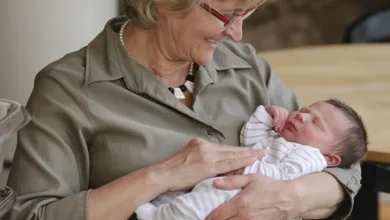Turning Passion Into Purpose After 50: 3 creatives living their dream
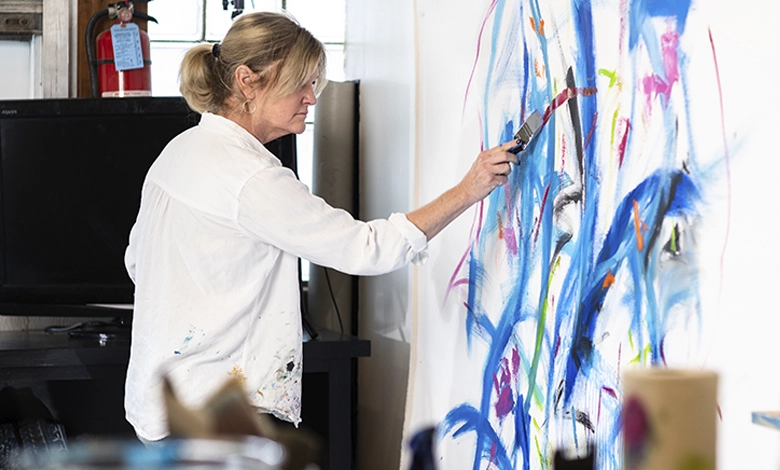

Maybe you’ve had that twinge when you were knitting or baking or refinishing a piece of furniture you found at a garage sale – doing, in short, whatever fills your heart and brings you peace. What if, you may have mulled, I could turn this into a business? What if I finally went all in?
Denise Fletcher did. She’d worked in the fragrance industry for decades, and only when she finally turned her part-time jewelry business into her vocation did she realize she’d wanted to be her own boss since she was in her twenties.
Jack Pointer did, too. He took his job losses in journalism as signs he was meant to do something else. He’d been writing comedy sketches since fifth grade, so he decided to try his hand at humor-driven podcasts.
So did Lisa Temple. When her youngest child began attending a Mother’s Day Out program, Temple decided to use that time to take a painting class. Seventeen years and numerous workshops and classes later, she began selling her paintings full time.
Three people, three stories, three dreams realized—each an individual interweaving of talent, love, doubt, courage, and finally, now-or never, do-or-die determination.
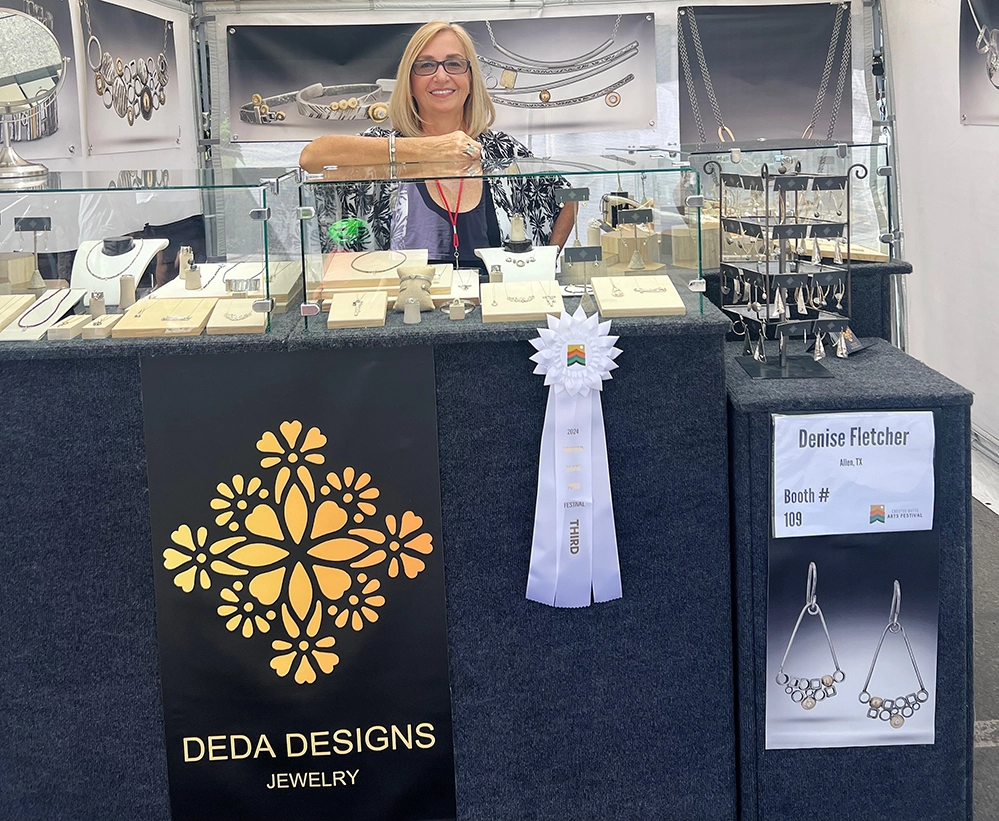
Denise Fletcher: From side gig to thriving business—when she finally went all in
“Going into the arts like that,” said Denise Fletcher, “is the best decision I could have made in my life.”
For decades, her background in business and science landed her jobs in the fragrance industry, including a 15-year stint in New York City. When her family moved to Kalamazoo, Mich., she shifted to management. But that still involved hours away from her children, so she left the corporate world.
“That was a major adjustment for me,” Fletcher said. “I’d been working for a long time and was fairly ambitious—it was part of my identity.”
For a year, designing, building and furnishing their new home kept her busy. When the family finally moved in, she wondered how she’d spend her time. A pamphlet from the Kalamazoo Institute of Art answered that, in ways she had never considered.
“I thought I’d take a class and learn how to string a strand of beads,” Fletcher said. “When I went into the classroom, it had all these power tools, drills, kilns and soldering equipment.”
Turns out, she’d signed up for a metalworking class. But because she’d paid for it, she stayed.
“That’s how I got into jewelry making,” Fletcher said. “Otherwise, I’d have gone home with a beaded necklace.”

She took the class and was hooked. Within six months, she knew she wanted this to be her livelihood. So in 2003, DEDA (an anagram of Denise, her son Evan, husband Dan and daughter Alana) Designs became official. She used $200 from the family budget to buy silver, a hammer, a jeweler’s saw and drill bits.
“My very first art show was the Richland Art Fair in the village close to where we lived in Michigan,” she said. “I was absolutely thrilled to be there. I was pretty astonished that anyone would buy what I made and actually wear it.”
Her only hangup? She’d been a businessperson for so long; calling herself an artist gave her a case of “imposter syndrome.”
But she clearly was an artist who was ravenous to learn more. When the family moved to Vermont, the owners of the jewelry store where she worked encouraged her to learn more about diamonds. She did, eventually earning the very prestigious Graduate Diamonds Program diploma through the Geological Institute of America.
All was going well. And then the pandemic hit.
“At that point, it wasn’t a business, but more of a side gig,” said Fletcher, whose family had moved to Allen, Texas by then. “I was totally shut down by Covid and thought ‘This is probably the end.’”
Turns out, it was instead the beginning. The pandemic ended, and people were eager to be out, to be around others, to surround themselves with whatever beauty they could find…which they did at a Bayou City Art Festival where DEDA Designs had a booth. That, Fletcher said, was a turning point.
“I’d been running out of money to buy silver and gold and diamonds and gems,” she said. “But the response at the show was excellent, so I redoubled my efforts. That all made me think, ‘Well, I guess I’m not going to give up.’”
And that, she said, is the key – not only to making her business work, but to becoming the person she is today.

“Designing art keeps me centered,” Fletcher said. It provides me with goals and tangible purpose. Plus, I’ve made so many friends and am enriched by all these different artists.
“Without art, my life would have been so much poorer.”
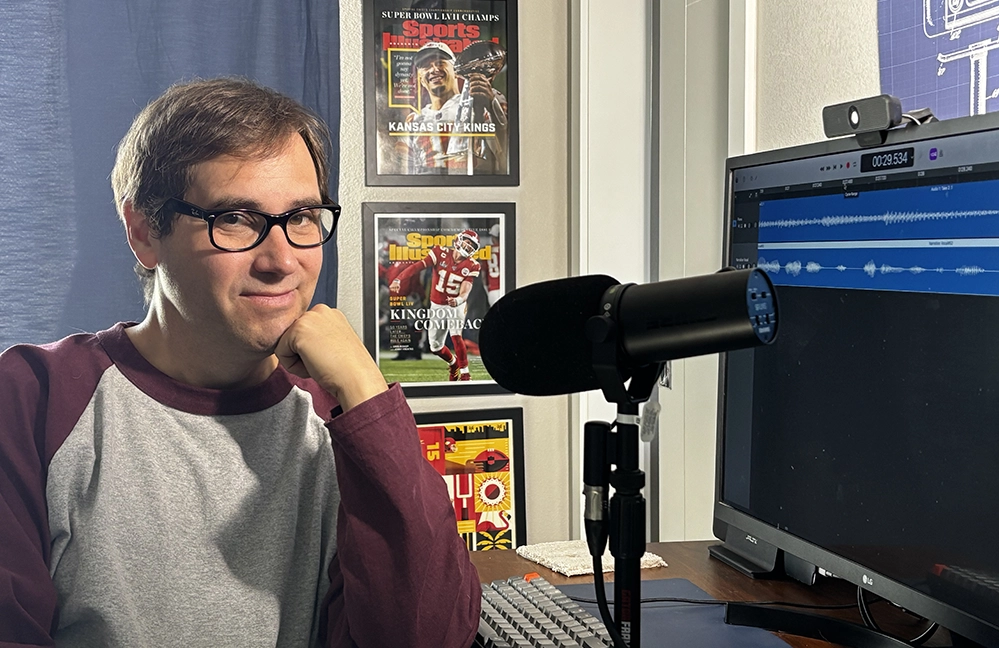
Jack Pointer: Starting fresh with comedy podcasts after years in journalism
“The last couple of years have not been great for the economy or for mass media,” Pointer said.
He speaks from experience. He’s worked in a number of newsrooms at both newspapers and radio stations and has been laid off more than once. Although he somehow manages to always land another job, he decided he couldn’t just wait around to get his hopes up and dashed again.
“Last time, when I learned I wouldn’t have a job anymore,” Pointer said, “I decided I could do one of two things: Dwell on the negative of all this or try to make something happen.”
The “something” was a podcast he’d thought about doing for a while. Or perhaps that’s not quite the right way to put it, because he’d been writing scripts and skits long before “podcast” was even a word, much less a part of the vernacular.
“On Friday and Saturday nights in smalltown Missouri, I discovered the world of Saturday Night Live, then SCTV with John Candy, Eugene Levy, and Late Night
with David Letterman,” he said. “It resonated with me. I was writing sketches in fifth grade.”
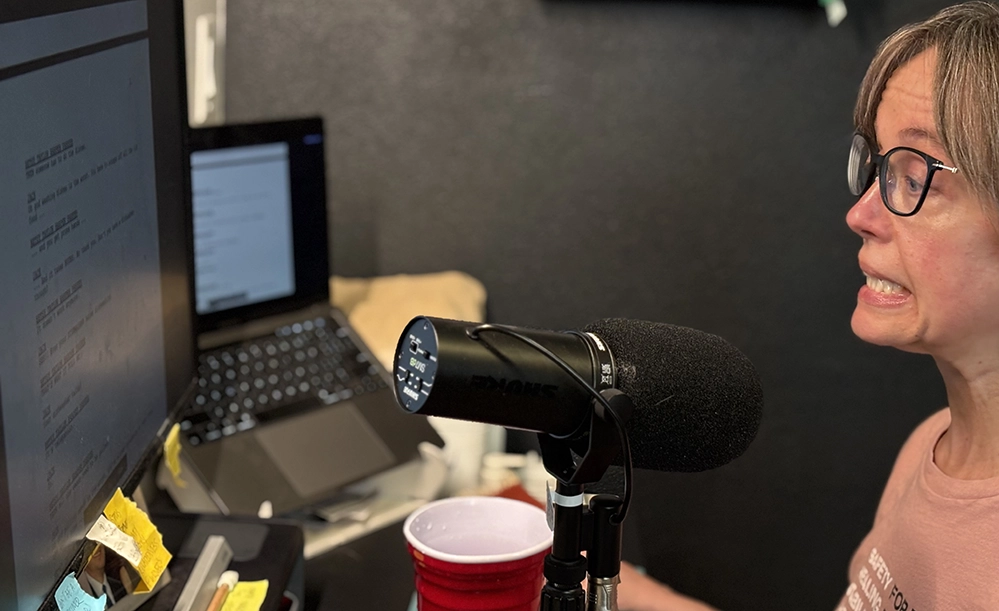
Years later, in 2001, Pointer moved to Chicago when he got a job at The Chicago Tribune. He took courses at Second City, the improvisational comedy enterprise where many of his idols had studied, further giving him fodder for the future he had yet to even consider.
He left Chicago in 2010 for Vermont, where Jessica, the woman who later became his wife lived. Six years later, they moved to Washington D.C. for his job at a radio station. There he realized he had a knack for that type of writing, and others remarked on it, too.
So now, living in Fort Collins, Colorado, he and Jessica began working on the podcasts in earnest. She’s a voice actor and classically trained opera singer and is the other voice in the short comedy sketches on Funbunker Mixtape, the name of his podcast.
“I had a lot of inspiration from Chicago radio in the mid-90s, which was personality driven,” Pointer said. “I’ll knock out five of these, see what the reception is, and take it from there. It’s an exploration to see what I’m capable of, writing-wise, and what worksand doesn’t work.”
He hopes one day to make money. But, until then, he’s relying on savings as well as income from freelancing and working in retail.
“I don’t get down on myself because the whole landscape is insane,” Pointer said. “I can be bitter, but this is the reality. Hopefully, I’ll get money from it one day. But basically now, I have the knowledge I created something; that this is mine.
“The whole act of creating is its own reward.”

Lisa Temple: From classes to galleries—the artist who found her voice
Not until Lisa Temple fulfilled her dream to be an artist—a dream she didn’t even know she had – did she recognize her decision for what it was: a missing piece; the one completing the puzzle of who she was meant to be.
“I always felt there was something kind of missing in my life,” said Temple, a portrait and abstract artist in McKinney, Texas. “It took me a long time to find this.”
She might still be looking if she hadn’t made a certain choice 24 years ago, when her third child was a toddler and started a Mother’s Day Out program.
A stay-at-home mom, Temple decided to use that time to take a class.
Initially, she considered flying lessons because her dad had been a pilot in World War II and later in his life enjoyed flying a small private plane for pleasure.
She’d always been afraid of flying, yet also intrigued by it, but reasoned that learning as much as she could about it would help her get over her fear.
But her artist’s heart—the one culled through years of taking ballet, tap, and jazz classes with her sister—lured her in another direction. Her sister became a professional dancer, but while Temple taught dance for five years, that wasn’t her true calling. So she found an oil painting class and signed up.
Those hours every week became, she said, “the time I could go and play and do what I wanted. We painted a lot of landscapes and barns, and I enjoyed it,” but it wasn’t until I started painting people that I began connecting emotion to my work, and then I was hooked,” Temple said.

Then one day, shortly after Hurricane Katrina hit New Orleans in 2005, she saw a small photograph—barely three inches high—of a woman whose face bore the blank stare of someone whose life had been decimated.
“I painted her, and I loved the emotion that drew me in,” she said. “I began doing that. I ended up painting for a ministry which fights human trafficking.”
Before that, as well as during and after, Temple kept taking classes. As she got better, she began selling her work. Even so, painting “was sort of a side job,” she said. “I still had children at home.”
In 2006, she and four other artists opened Aristela Gallery in the historic Collin County prison. Unfortunately, the building sold, and the gallery closed. During this time, Lisa continued to hone her skills, taking portraiture from renowned Dallas artist Dedee Barr. A dozen years later she decided “to make this fulltime; to go for it and created Lisa Temple Fine Art, and do the whole thing.”
She began doing more shows and festivals, establishing herself as an artist whose work collectors are drawn to. Branching into abstract art, she chooses bold colors that “vibrate and interact with each other” she said. She combines her abstract style with portraits, finding ways to express her faith and voice.
“Art should speak to people,” Temple said. “It’s all so personal to them. I don’t want to interrupt and say too much about a piece unless the viewer asks. People want their own story. They’re drawn to it for reasons that are personal to them.”
The formerly shy child found voice with dance and with art – which she also tends to combine in her paintings. Doing this, she said, “fills my soul; it fills my spirit.”
She credits fellow artists who have become friends with helping her discover that elusive puzzle piece to her personality. Mostly, she is grateful to Robb, her husband of 40 years.
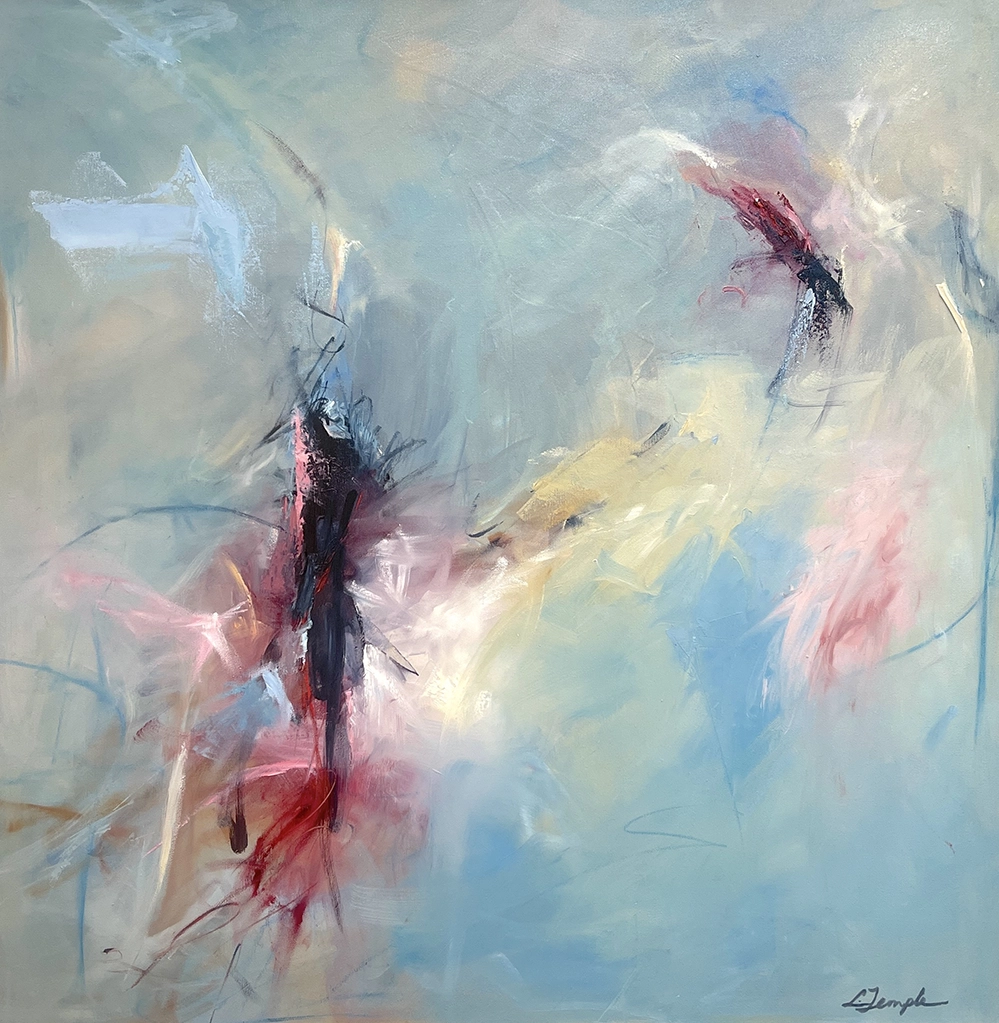
“He’s my yes person,” she said. “He allows me freedom to be me. This has given me confidence and purpose,” she said. “I feel most like myself when I am creating art.”
Ready to take the leap? Here’s some advice from our creative trio:
Denise:
Don’t give up on your idea or your dream. It does take perseverance to do this. Of course you’ll get tired of doing this at times. Step away; take a break.

Jack:
If you try, you may not succeed but if you don’t try you definitely will not succeed.

Lisa:
Get involved in a community of like-minded people. Say yes to what is calling you even if you feel scared and unqualified. Jump in! This is the best way that I have found to grow.
Ready to turn your passion into purpose?
Whether you’re crafting jewelry, recording podcasts, or painting portraits—or dreaming of something entirely different—these three stories prove one thing: It’s never too late to chase what sets your soul on fire. The twinge you feel when you’re doing what you love? That’s your life calling.

